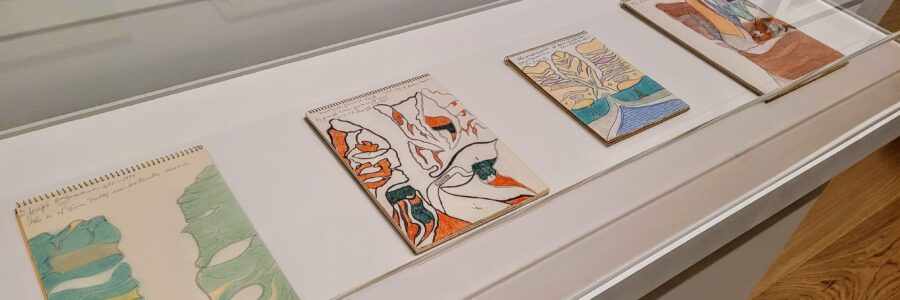
The Menil Collection presents Joseph E. Yoakum: What I Saw
at the Menil Drawing Institute
First major museum retrospective of the self-taught, visionary American artist in more than twenty-five years on view in Houston through August 7, 2022
Joseph E. Yoakum: What I Saw at the Menil Drawing Institute is the first major museum retrospective in more than twenty-five years to focus on the dream-like landscape drawings of Joseph Elmer Yoakum (1891-1972), a self-taught, visionary American artist.
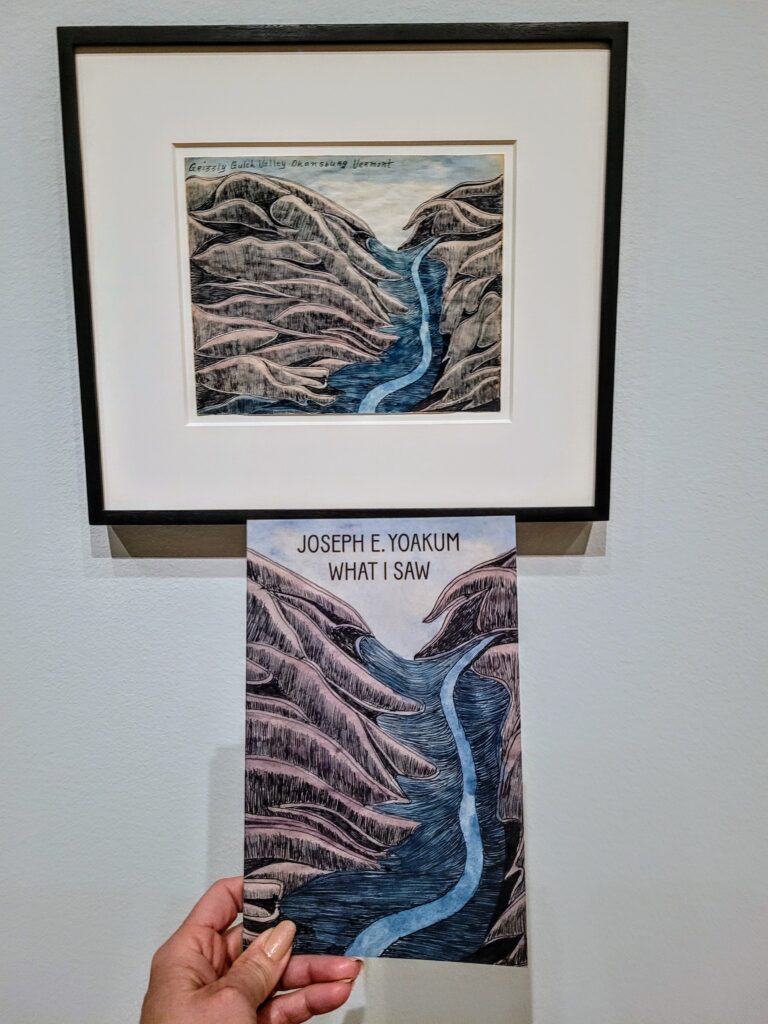
On view in Houston through August 7, 2022, the exhibition illuminates Yoakum’s vivid creativity, imaginative vision of the land, and deep spirituality and also explores his rich, complex biography as an African American man who claimed Native American heritage.
Coorganized by the Menil Collection, Houston, the Art Institute of Chicago, and the Museum of Modern Art, New York, the exhibition offers the most comprehensive study to date of the artist, who made a significant and highly original contribution to American art.

The Menil Drawing Institute presentation will feature more than 80 drawings by Yoakum, most from the collections of Chicago-based artists affiliated with the School of the Art Institute of Chicago, who deeply admired the singularity of Yoakum’s creativity. His collectors, supporters, and friends include Roger Brown, Cynthia Carlson, Whitney Halstead, Gladys Nilsson and Jim Nutt, Christina Ramberg and Philip Hanson, Karl Wirsum and Lorri Gunn, and Ray Yoshida, all of whom helped promote the artist’s work during and after his lifetime.
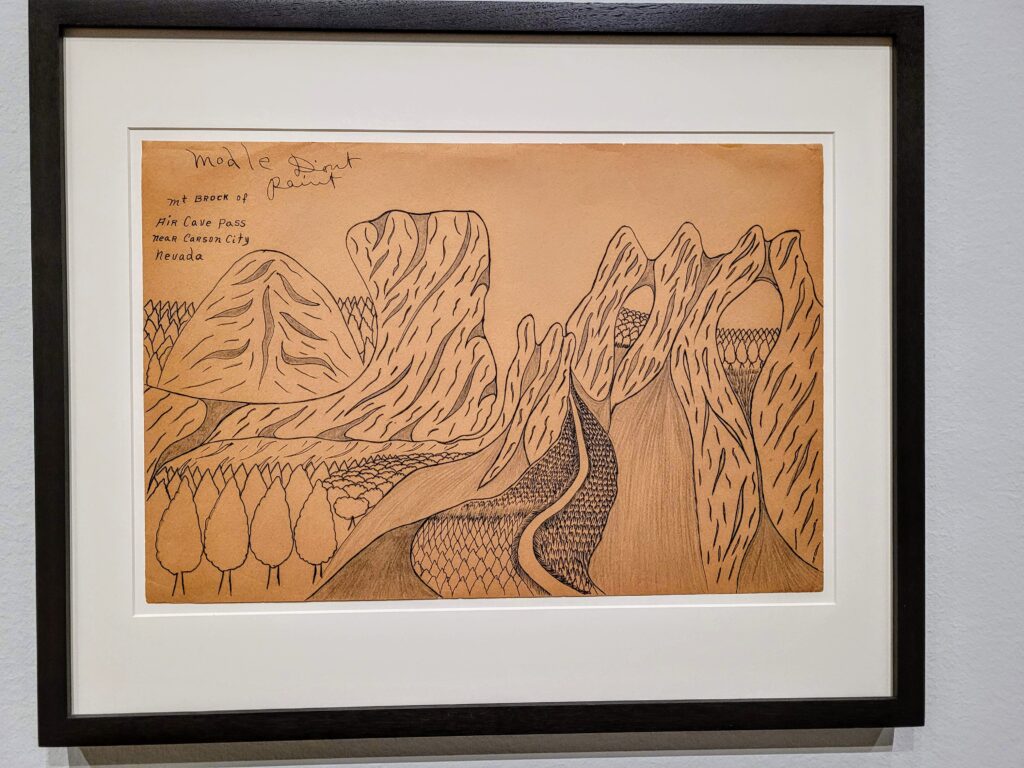
Highlights of the exhibition’s themes include:
• Memory: Yoakum claimed to have visited six continents in his youth, and when he began drawing at age 71, he continued his travels on paper, pulling from his memories in an intuitive process.
• Landscape: The grandeur of Yoakum’s deserts, mountains, and oceans illuminate his skill as both a dramatic storyteller as well as his reverence for the natural world, both of which were influenced by his spiritual beliefs. Untrained in the conventions of linear perspective, he drew overlapping planes to define space and depicted plants, rivers, and other landforms that are disproportionate in relation to their settings.
• Portraits: A much smaller subset of Yoakum’s work, his portraits typically depict celebrated figures in the African American community, such as actors, athletes, and performers, as well as Native Americans.
• Technique: The exhibition explores Yoakum’s approach to composition and how he developed his own system of graphic vocabulary using inexpensive paper and tools and primarily drawing freehand.
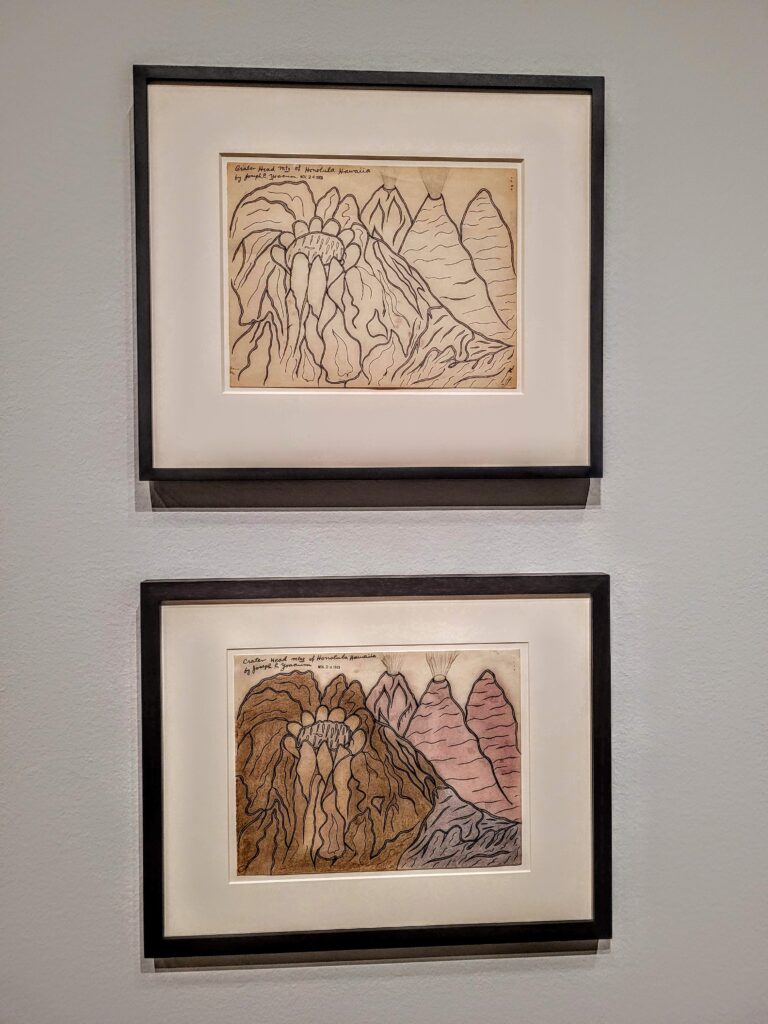
Rebecca Rabinow, Director of the Menil Collection, said, “Joseph Yoakum holds the rare and coveted designation of an ‘artist’s artist,’ reflecting his foundational importance to art historians, critics, members of the creative community, and other artists, all of whom continue to be inspired by his work. Recognizing Yoakum’s agency in transforming his visual memories into extraordinary works of art has been a main goal of this exhibition and accompanying catalogue, which the Menil is delighted to bring to audiences in Houston.”
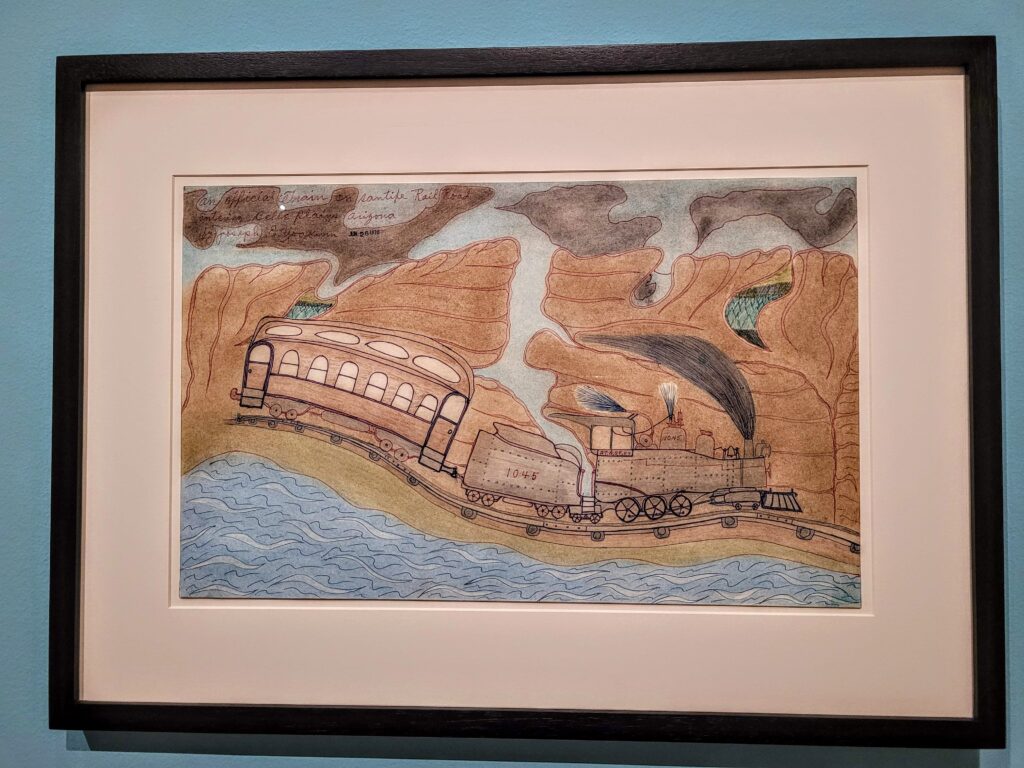
Edouard Kopp, John R. Eckel Jr. Chief Curator of the Menil Drawing Institute, said, “The Menil is proud to bring Joseph Yoakum’s unique and meaningful artistic contributions to a broader public, celebrating more widely what has become an essential chapter in the history of American art and the American landscape. Outside of the artistic mainstream and unrestrained by the bounds of convention, Yoakum has given us a deeply personal, idiosyncratic, and poetic vision of the land.”
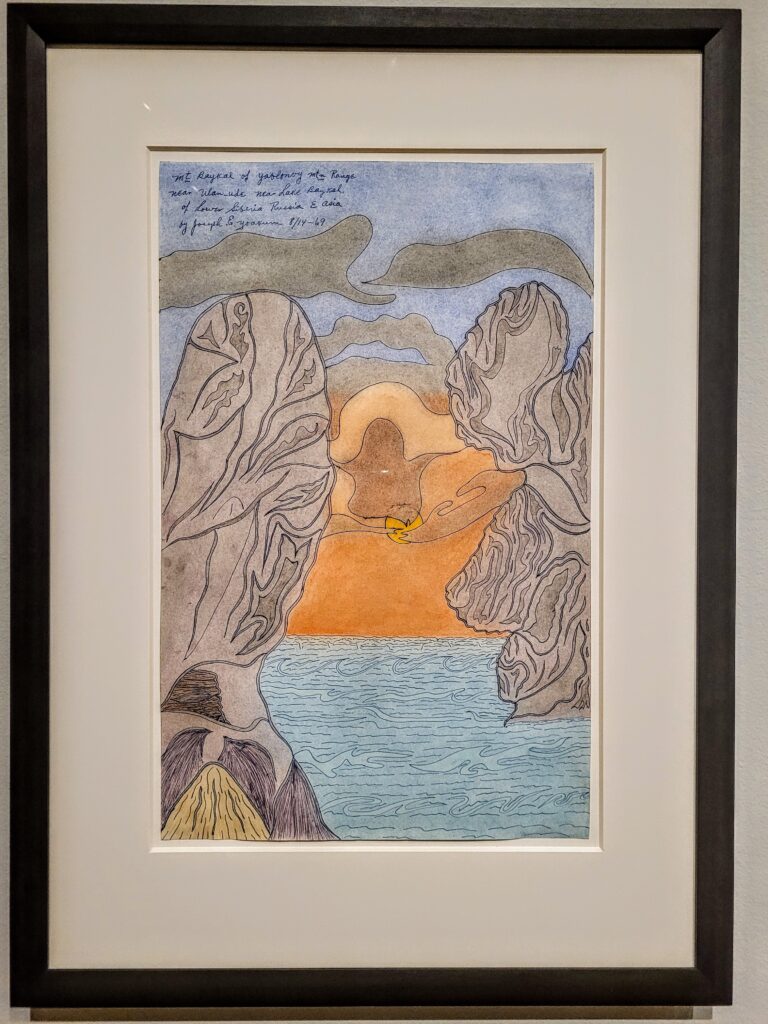
About Joseph Yoakum
Much of what we know of Yoakum’s extraordinary life story comes from the artist himself. Born in Missouri just twenty-five years after the end of the Civil War, Yoakum had little schooling before he left home to work for several circuses, traveling across the United States as well as abroad. He later served in a segregated noncombat regiment during World War I before settling in Chicago’s South Side. Inspired by a dream, he began his artistic career at age seventy-one, ultimately producing some two thousand drawings before his death in 1972.
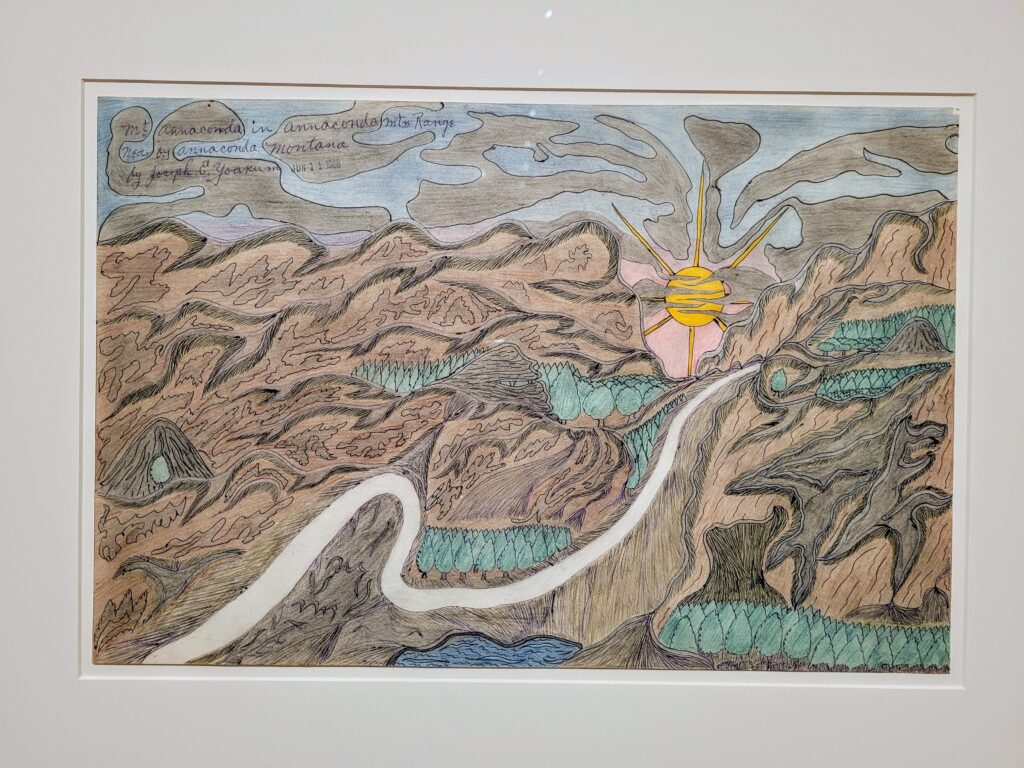
As the exhibition title intimates, Yoakum’s drawings reflect his travels to every continent except Antarctica. As he put it, “I had it in my mind that I wanted to go to different places at different times. Wherever my mind led me, I would go. I’ve been all over this world four times.”
Awareness of his biography is critical to a contemporary examination of Yoakum’s body of work—marked by a distinctive, linear style of draftsmanship—but so, too, is recognizing his agency in transforming his visual memories into works of art. His idiosyncratic drawings, predominantly landscapes in ballpoint pen, colored pencil, pastel, and watercolor, convey his poetic view of nature. Simultaneously, Yoakum also made portraits of African American icons.
Photos: V. Sweeten